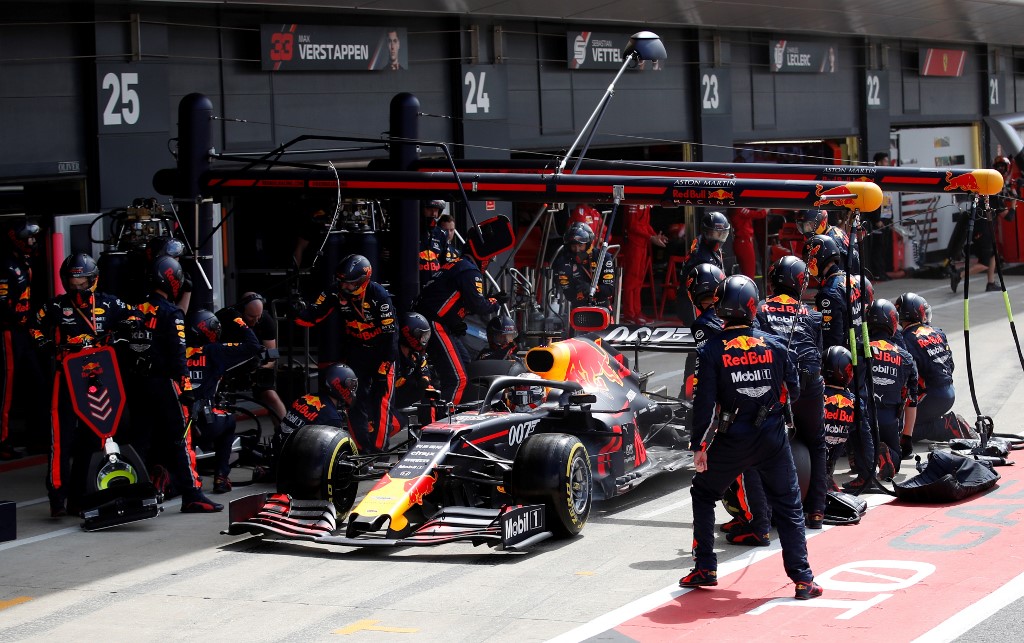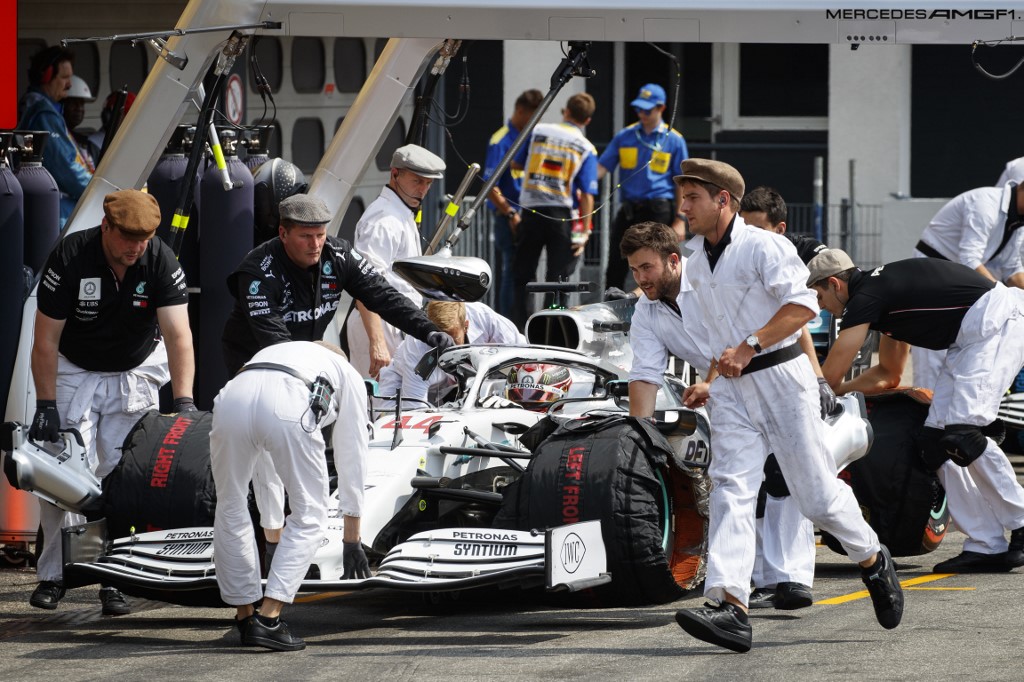Gone in 1.88 seconds: The secrets of record Formula One pit stops

Red Bull Racing’s Dutch driver Max Verstappen makes a pit-stop during the British Formula One Grand Prix at the Silverstone motor racing circuit in Silverstone, central England, on July 14, 2019. (Photo by MATTHEW CHILDS / POOL / AFP)
Blink and you miss it. In the last few weeks, the cutting-edge of Formula One technology, coupled with old-fashioned muscle and hand-eye co-ordination, has witnessed record-breaking pit stops.
At the British Grand Prix at Silverstone in mid-July, Red Bull managed to change the four wheels of Pierre Gasly’s car in a mind-boggling 1.91sec
However, last weekend at the German Grand Prix in Hockenheim, that lightning fast maneuver was made to look almost pedestrian when the Red Bull team got race winner Max Verstappen rebooted in a new world record time of a staggering 1.88sec.
The average in the sport is closer to three seconds.
“It’s so fast that you do not even have time to see the guys change the wheels,” said Gasly.
“You are focussed on the light (which tells the driver that he can start off again) you are already pressing on the accelerator. It is an incredible job on the part of the mechanics.”
Until this season, the previous record was 1.92sec, jointly held by Red Bull at the 2013 US Grand Prix on the car of Australian driver Mark Webber and Williams at the European Grand Prix in 2016 in Azerbaijan with Brazil’s Felipe Massa at the wheel.
“Going under two seconds is difficult because we are touching the limits of human performance,” said Red Bull boss Christian Horner.
“It’s like the 100m. We are still beating the record, but the progress is becoming slimmer and slimmer.”
It’s all a far cry from the days when cars stopped in the pits only when it was necessary.
The modern idea of a pit stop was first carried out by the Brabham team in the 1982 season who used it at the Austrian Grand Prix in August that year.
At the time, besides changing the tires in about seven seconds, cars were also refueled which took around 15 seconds in total.
Mid-race refueling was banned in F1 between 1984 and 1994 (mainly for safety reasons) and again since 2010 (mainly for financial reasons).
Now, teams will pit cars at least once in a race, more often in the rain.
‘Training, training and more training’

Mercedes’ British driver Lewis Hamilton sits inside his car in the pit stop during the qualifying session of the German Formula One Grand Prix at the Hockenheim racing circuit on July 27, 2019 in Hockenheim, southern Germany. (Photo by VALDRIN XHEMAJ / POOL / AFP)
“With new tires, you are going a lot faster, so if you lose 20 seconds in the pit lane, you can still catch up on the track,” said Horner.
The objective is to gain enough time over your opponent in the pits to eventually gain a crucial edge back on the track, especially with overtaking proving to be at a premium at most races.
“So you have to choose the right time for a pit stop and do it as quickly as possible,” added Horner.
“So we need to be able to rely 100% on those who carry them out.”
He added: “Every stop involves about 25 people and everyone has to work in a perfectly synchronized way.
“The driver has to stop in exactly the right place, the equipment has to run smoothly and the mechanics need to be in complete harmony” to unscrew the nuts, remove the old wheels, fit the new wheels and screw in more nuts.
In 2010, a pit stop took about four seconds. Very quickly, this was slashed in half.
“Since the end of refueling, we have been focussed entirely on the speed of changing the tires,” added Horner.
Developments in technology have also been crucial.
For example, teams have perfected the power guns used to unscrew and screw in wheels.
“The equipment plays a key role, of course, but the human factor is much more important,” insisted the Red Bull chief.
“It’s training, training and more training. It’s hard to quantify, but the mechanics train almost every day at the factory and of course on Fridays, Saturdays and Sundays during a Grand Prix weekend.”